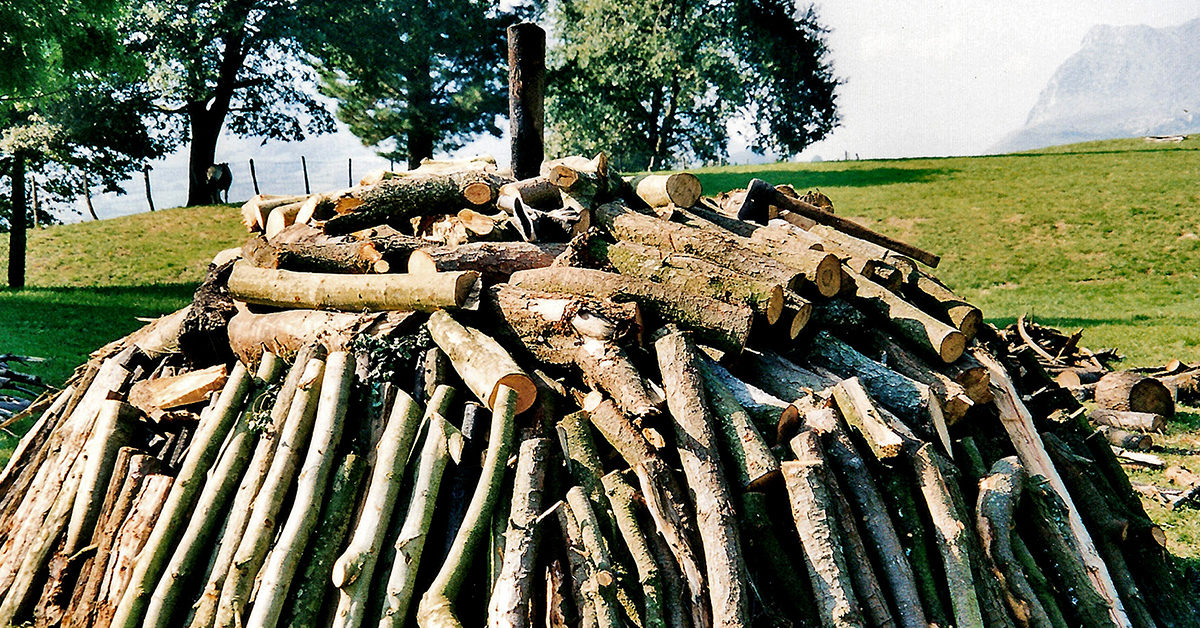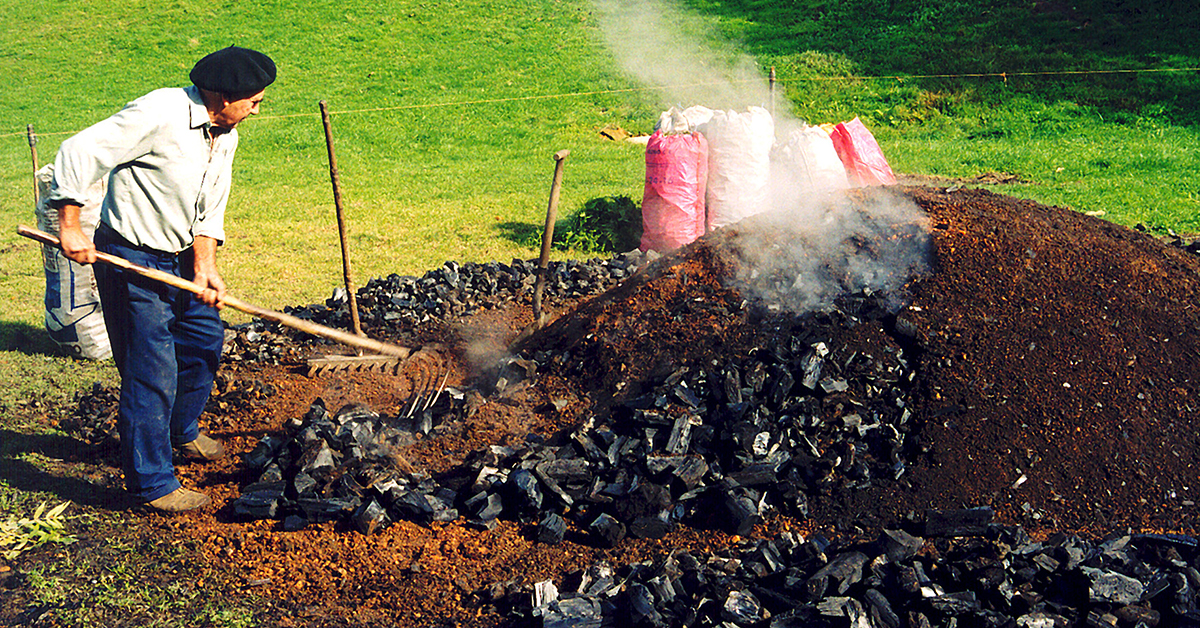Basque ethnography at a glance
Formerly, in the mountains surrounding the Valley of Carranza (Bizkaia), charcoal burning would be among the main uses of wood.
The burning season would usually start in March and last until November. The wood (chestnut, oak, beech or oak) to be charred would have been harvested in the winter and properly seasoned for several months. Two-men saws, axes, mallets and wedges were used for felling and preparing the timber.
First, a circular clearing was opened in the woods, with hoes and shovels, to accommodate the clamp. Sites located on steep hillsides would be protected by small walls of dry stone so as to contain the soil extracted to make it level.
Should the burn site be far away, the load of raw wood would typically be transported in a cart pulled by a yoke of oxen or cows. And should the felled logs be nearby, they would be carried on shoulders; some charcoal burners would use a purpose-made, quite primitive wooden frame with four sticks in a V shape at the top, where the billets were placed, and another stick vertically inserted at the bottom, which served as a handle.
Prior to building the clamp, a central peg was erected and the hearth marked; then the wood was carefully stacked into a conical pile with a chimney in the centre.
Once built, the clamp was completely covered with turf, grass side in, or soil and fines —broken-up charcoal— from a previous burn. Openings were left at the bottom to admit air.
Next, the central stake was removed and the pile lit. Some burners would choose a full moon day for lighting it. To that end, a small bonfire was burned and its embers shovelled down the mouth of the chimney, along with dry sticks and twigs. Having climbed up a ladder to the top of the stack, the burner would stir the inside with a poker —a pole about three meters long— for the wood to catch fire. After an hour or two, when the flames finally emerged, the chimney was covered, and so was the air vent. On the same day, at dusk, it would be uncovered and refilled to the brim with yet more firewood.
Throughout the burning process, which roughly took from twelve to fourteen days for a mid-sized stack, the charcoal burner would camp out to tend his clamp day and night, thus avoiding tearing or sinking of the covering layer, caused by the combustion of the wood, and stopping the fire from breaking out. Any holes or cracks would be patted down firmly with a mallet —a wooden cylinder with a handle— and sealed with wood chunks and chips, turf or soil, allowing no air to enter, so the wood would be charred, not incinerated.
As the wood carbonized, the pile demeaned or reduced in size. Charcoal burners would hit the cover layer with the mallet or a thick stick to compact it and reduce any gaps which would have occurred.
When the burn was judged complete, the heap would be allowed to cool. Starting in the early hours of the morning, the crust of soil was raked off to plug cracks, preventing air from entering and coals from igniting. The charcoal was left to cool until the following morning.
Charcoal extraction was carried out with a rake or a prick, pulling it from the bottom and spreading it around the clamp. Pieces which were still smoking would be dampened with water from nearby springs or streams.
Traditionally, the charred wood was loaded into sacks and to the ox-cart, which was the usual means of transport back and forth clamps and selling points. On occasion, after the end of the 19th century, the Santander-Bilbao railway line would likewise carry charcoal from the Valley.
Between the 15th and 18th centuries, local burners would produce enough charcoal to supply ironworks and foundries along the banks of the rivers of the Valley. When they disappeared, charcoal was intended to feed small blacksmith’s forges, and for domestic fuel. In the 1940’s, and due to shortage of other combustibles, this form of carbon was used as fuel for the gas generators of motor vehicles of the time.
Miguel Sabino Díaz – Etniker Bizkaia – Etniker Euskalerria Groups
Translated by Jaione Bilbao – Ethnography Department – Labayru Fundazioa




